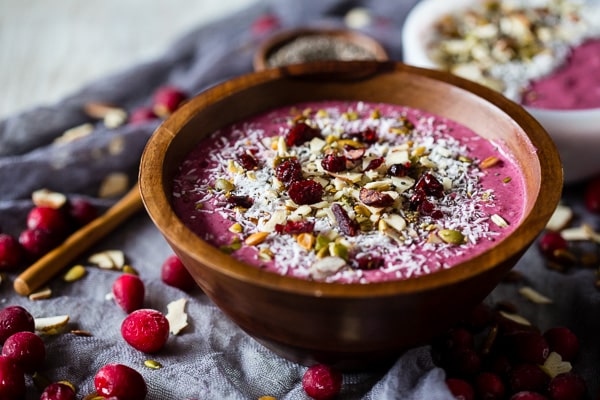If you’re a sucker for Instagram-worthy food porn, chances are you’ve lusted over an acai bowl or two during your scrolling. After all, acai’s vibrant purple hue is kind of hard to miss-well, that and the abundance of delicious-looking fruit, granola, and nuts that always seem to be perfectly sprinkled on top of it.

The end result is a gorgeous bowl that leaves you amazed nature can create something so naturally bright and colorful. And surely because it is found in nature, it’s bound to be healthy, right?
First, what exactly is acai?
The acai berry comes from the acai palm tree, which is commonly found in subtropic regions of Central and South America. In the United States, açaí is typically purchased frozen or in juices because its fragile exterior make it susceptible to bruising, says Sonya Angelone, R.D.N., a spokesperson for the Academy of Nutrition and Dietetics.
Acai berries are relatively low in sugar compared to some other fruits and have about 70 calories in a handful-sized serving, Angelone says. The berries also pack the same antioxidants and, therefore, disease-fighting potential, found in blueberries, raspberries, strawberries, and blackberries.
So are acai bowls healthy?
Let’s start with the good news. Torey Armul, R.D.N., says the average acai bowl is packed with nutrients (like calcium and Vitamin A), healthy fats, plus lots of filling and good-for-you fiber.
Angelone explains the typical base for an acai bowl is frozen puree or acai powder blended with water or milk. Not so bad, right? But the fruit isn’t naturally sweet, which means acai puree is often mixed with fruit juice or added sugars.
And, while some toppings can be healthy-like sliced fruit or berries, chia seeds, or other seeds and nuts-“the calories and sugar add up when options like coconut flakes, chocolate, or granola are loaded on top,” she says.
How can I make a healthy acai bowl?
For starters, Armul says you can try making your bowl at home, where you can keep an eye on ingredients.